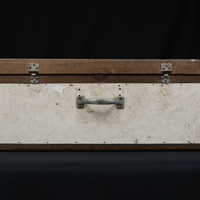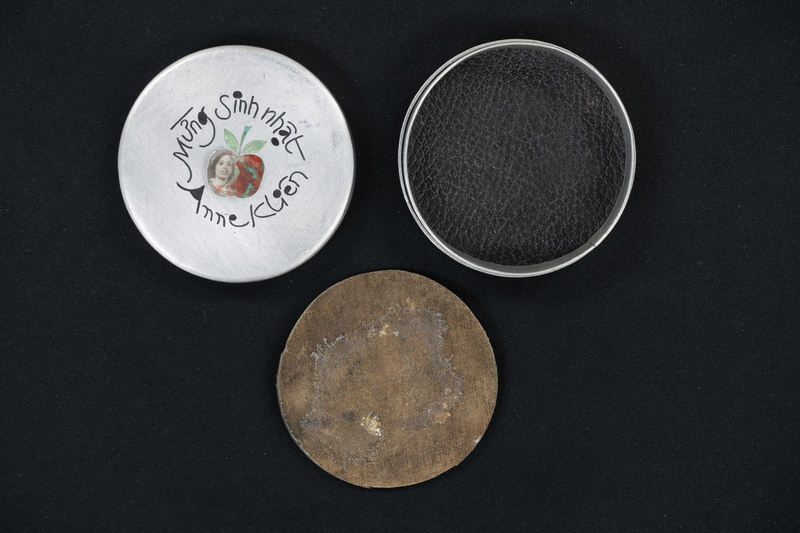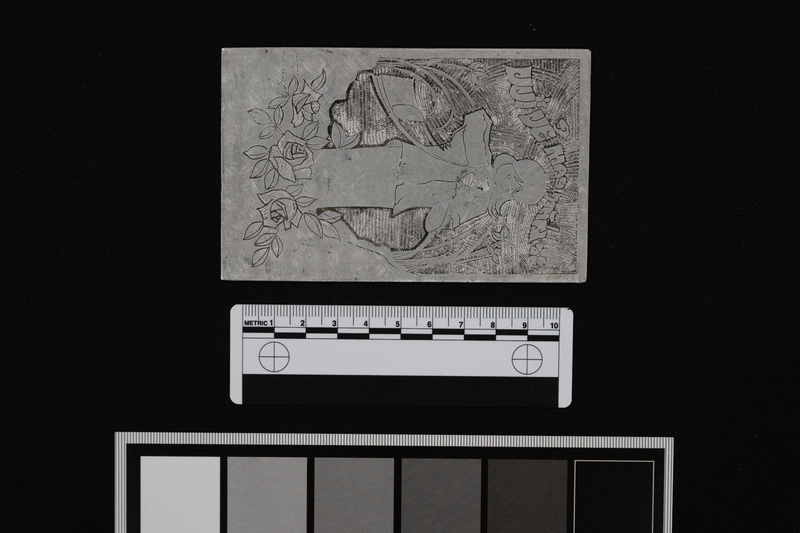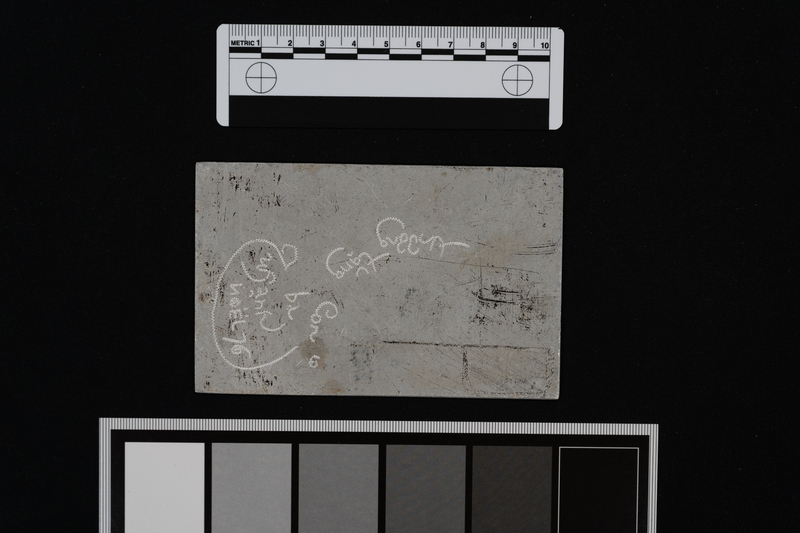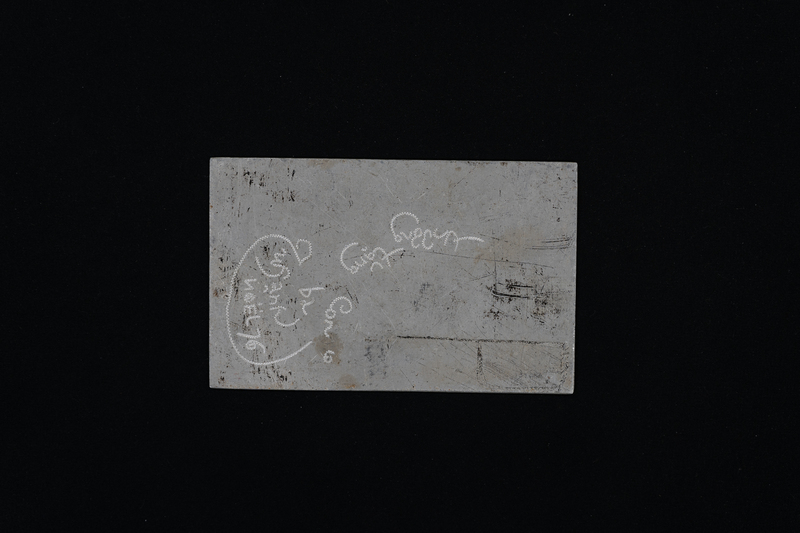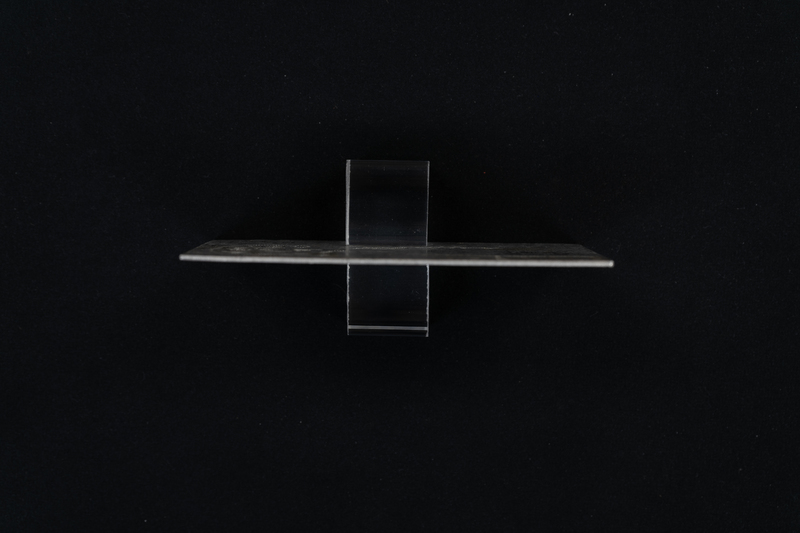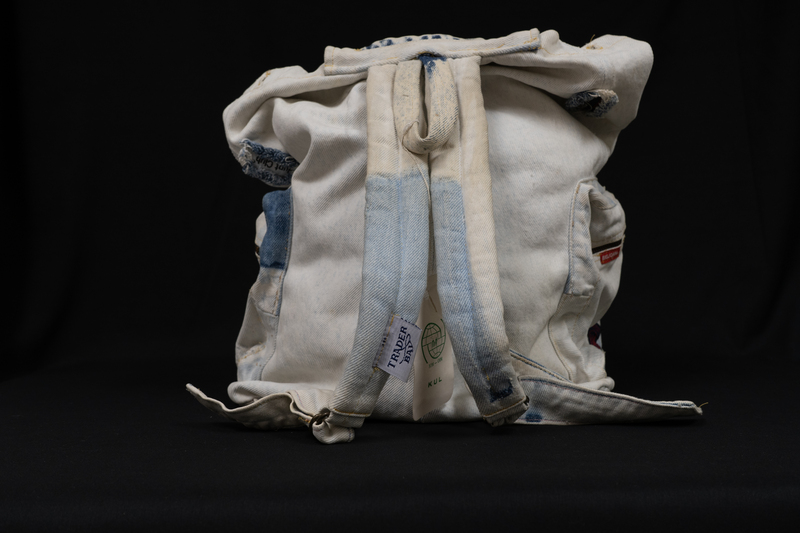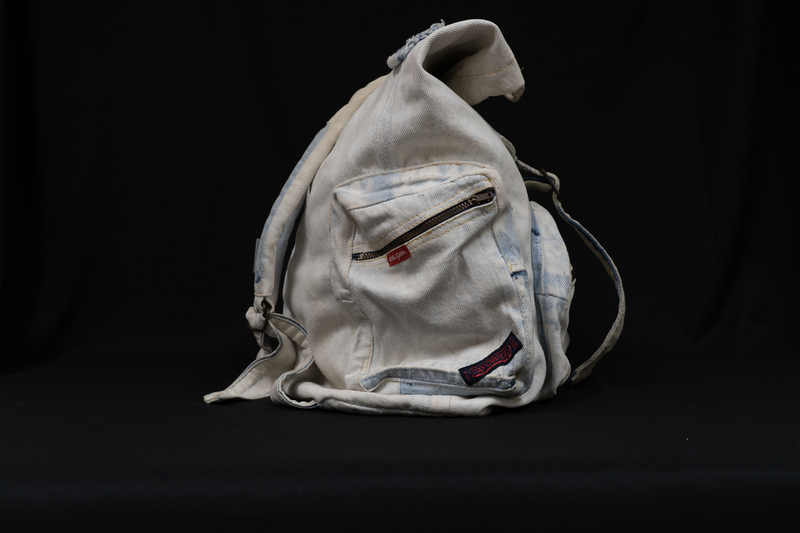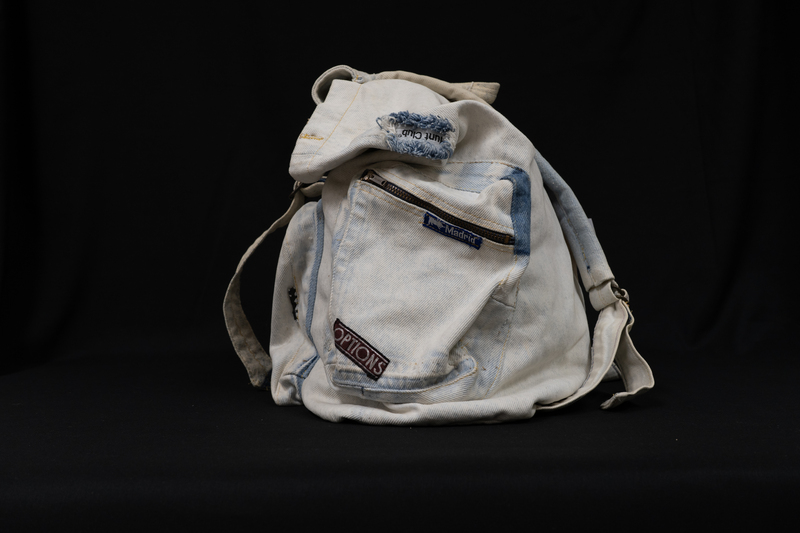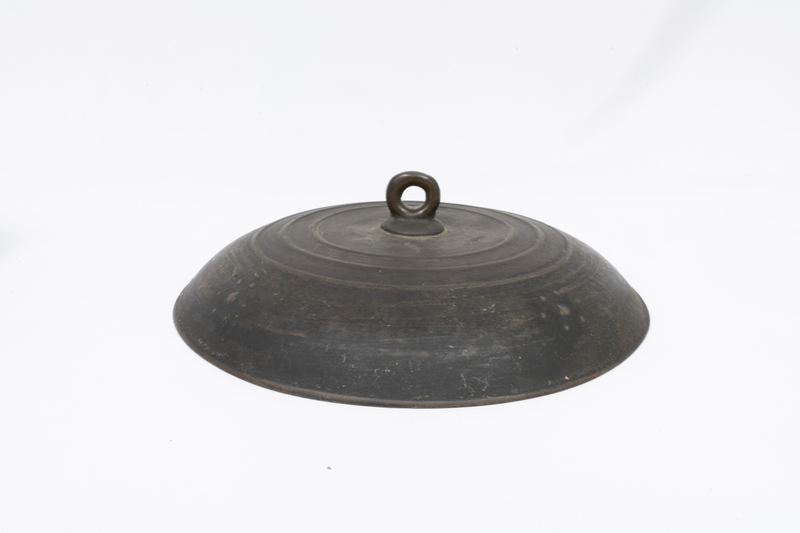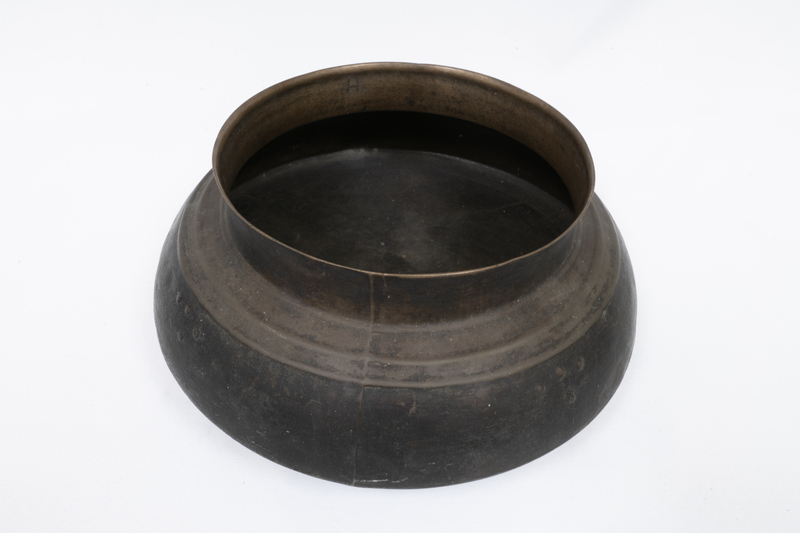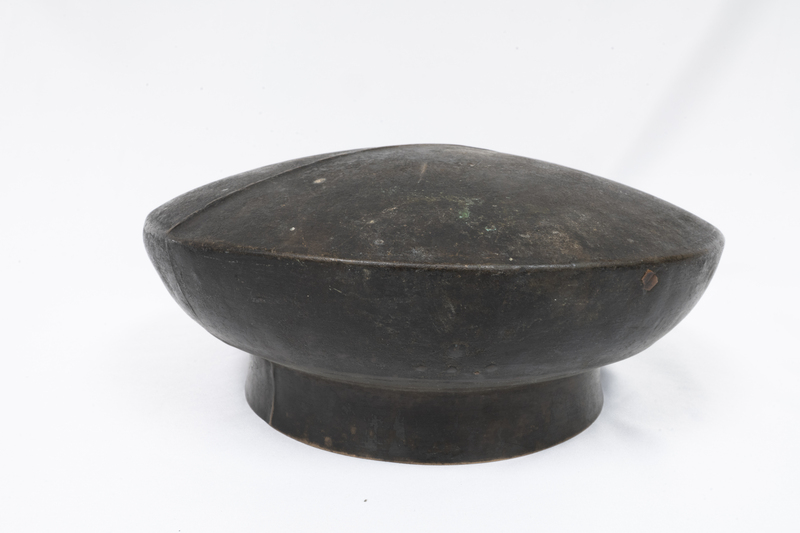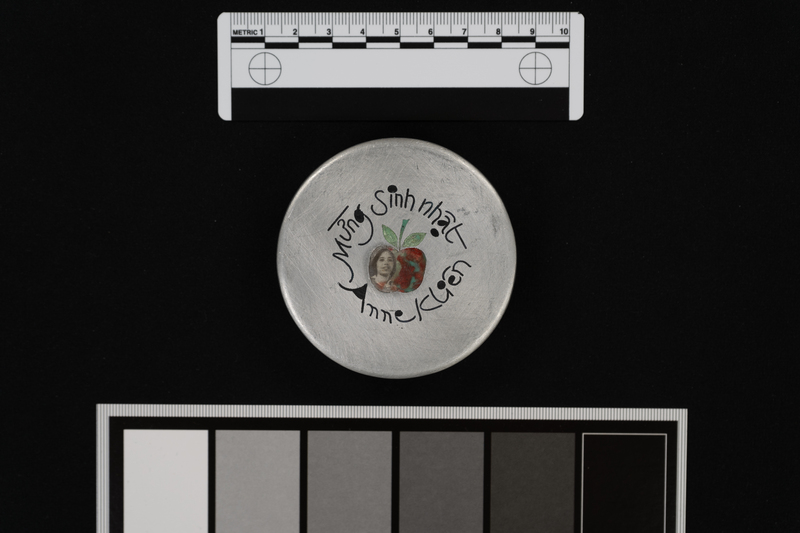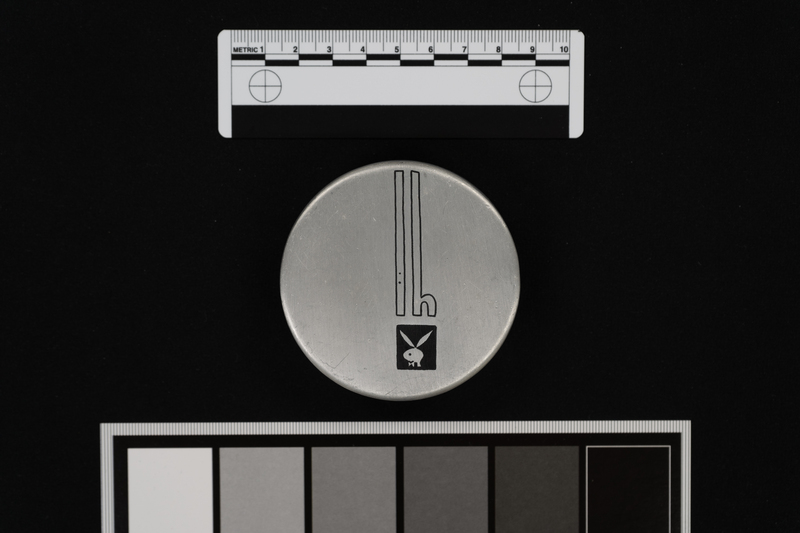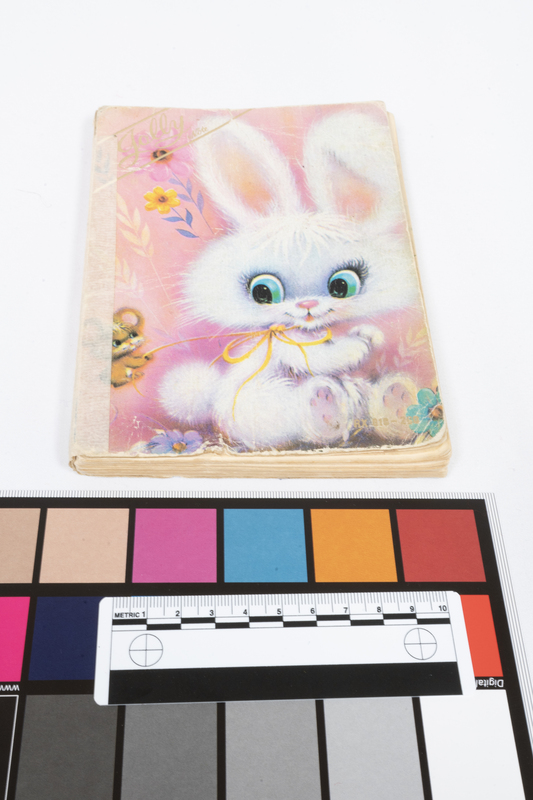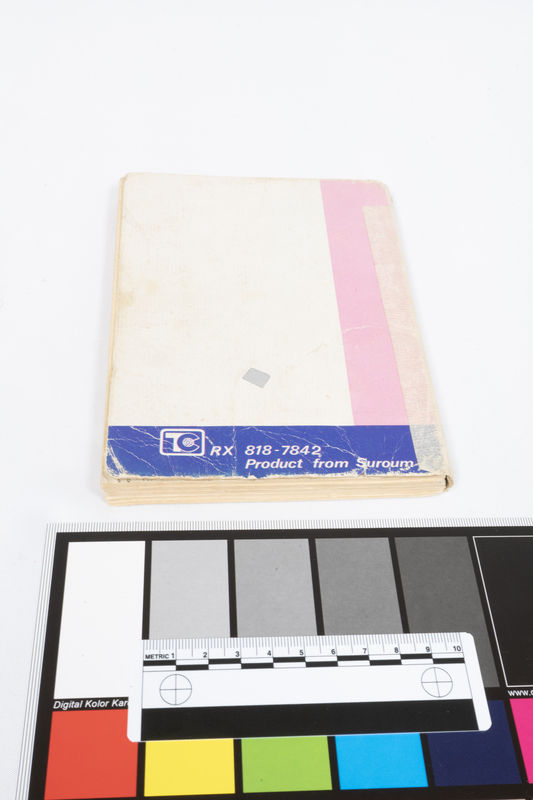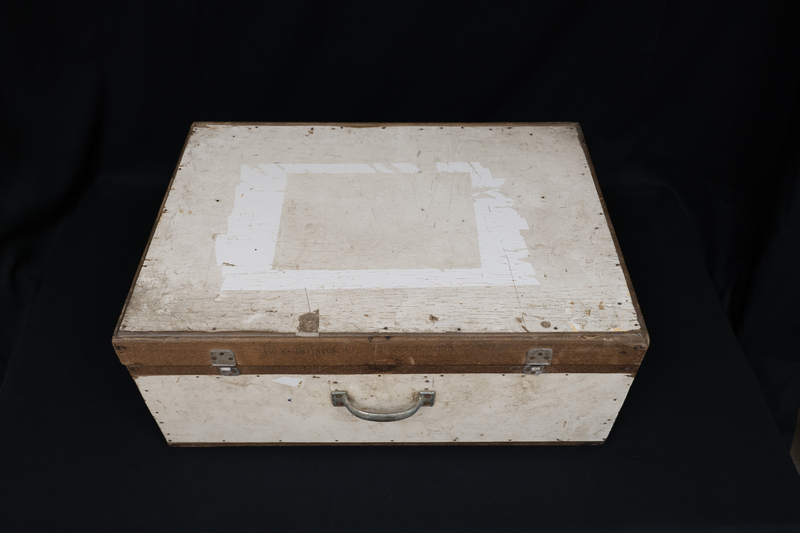Group 4: Reconstructing Home: Creating a Sense of Familiarity Through Sentimental Objects
About this Exhibit
The lives of many refugees often become documented and transformed into mere numbers and data. The datafication of refugees and their lives often results in the dehumanization of these refugees. In our exhibition, we examine Vietnamese and Greco-Roman refugee artifacts to examine how these artifacts helped refugees create a new meaning of “home” while they are displaced. By addressing and redefining what “home” means to refugees, we hope to humanize these stories and help others see them as more than just a piece of data.
In addition to humanizing the stories of these refugees, we are also analyzing the ways they are memory-keeping through this collection of artifacts. Holding onto pieces of their previous lives and living in the hope that one day they will reconnect with their old selves through this idea of memory keeping for these objects.
Vietnamese Refugee Artifacts
We wanted to highlight two themes within the artifacts: humanization and hope. The curation of these objects in this collection was meant to highlight the personality behind the refugee story that often gets overshadowed by the statistics that shape education about refugees. Our team also found a theme of hope within these objects as they served as a way to preserve memories for the refugees. Certain items like the jewelry box, wooden chest, and jean backpack were intended to physically hold mementos. Other artifacts like the black bronze pot, diary, and aluminum birthday card hold symbols of hope as they are tangible memories themselves.
Theme of Humanization
Artifact's Relationship to Humanization
This aluminum birthday card was created by a prison camp inmate as a gift for his daughter’s birthday. We felt that the aluminum birthday card fit into our exhibition as birthday cards represent a sense of normality as they are often given at home and between family members. This particular card represents a refugee’s attempt to create and maintain a sense of ‘home' for his daughter by gifting her this card for her birthday even though a card is not a survival necessity. Birthday cards typically represent an emotional bond, in this case between a prisoner and his daughter, and carry with it the emotions of the giver. This physical token of affection and celebration reinforces a sense of being remembered and valued, which is crucial for maintaining emotional well-being as a refugee and a sense of normalcy through an object that is not necessarily for physical survival. This card acts as a symbol of love, resilience, and the human connections that mimic those typically found within a home. Its emotional support, and sense of normalcy, help refugees find grounding in their lives and establish a sense of belonging.
Artifact's Relationship to Humanization
This backpack was made by a refugee out of an old pair of denim jeans. It was made by the refugee as a gift to another refugee as a token of appreciation. We felt that the backpack fit into our exhibition as backpacks are items used for transportation and can typically be found in any household. The backpack is more than just a practical household item, however, it can hold sentimental value, memories, and even other items of the refugee's previous life. Carrying a personal and handmade item such as a denim backpack allows refugees to create a connection with their idea of what a home should have as well as provides emotional comfort and a sense of stability.
Artifact's Relationship to Humanization
This artifact is evidence of the endurance and perseverance that is often required of a refugee. This item was carried along through multiple relocations and is a small symbol of stability in an otherwise unstable reality. Going from the refugee’s home village to Saigon to US the wear on the pot mirrors the similar pains that its owners had to go through.
Theme of Hope & Memory-Keeping
Artifact's Relationship to Hope & Memory-Keeping
This jewelry box was made for a woman’s birthday by her husband for the woman's birthday. We felt that the jewelry box fit into our exhibition as not only does it contain strong familial ties and sentimental value from being made by the woman’s husband, but the jewelry that goes inside of it typically holds sentimental value. The jewelry box symbolizes the refugee's identity and the preservation of their culture and family heritage. It represents the resilience and determination to hold onto one's past while forging a new future and allows a refugee to bring their “home” with them while trying to make sense of what their future “home” may look like.
Artifact's Relationship to Hope & Memory-Keeping
This diary belonged to a refugee who wrote about his time being imprisoned in a Thai prison after attempting to escape Vietnam. We felt that the diary fit into our exhibition as many people use diaries to document their lived experiences in order to preserve stories. Diaries act in a similar way to people telling stories to their families at home in order to preserve them. For refugees, the concept of “home” is not solely tied to a physical place but also to memories, experiences, and a sense of identity. A diary is able to capture these elements and provide a space where refugees can document their thoughts, feelings, and daily experiences in a similar way that creates a new idea of home for them.
Artifact's Relationship to Hope & Memory-Keeping
This chest serves as a physical holder of memories as it was used to store mementos from a refugee’s experience at the camp. This artifact also highlights human creativity because it is made of rotting barrack boards and pot remnants. It also highlights the hope that this refugee may have held of potentially sharing the experience with others or simply looking back on this struggle as a memory.
Greco-Roman Refugee Artifacts
The Amphora and the Neck Amphora were curated because these artifacts both represent the theme of hope and humanization. Depicting classical stories where the main character has to flee from home, both these artifacts illuminate the characters' uncertainty as they move forward in their lives. While this theme is most emphasized in the refugee experience, the unknown of the future is a universal feeling for all humans, emboldening the humanity of refugees. Moreover, the imagery in these artifacts includes the main characters cherishing non-useful battle objects during their journey. Preserving their humanity, these objects also communicate their hopefulness for the future, where peace is achieved, and analyzing the ability of their possessions to aid in survival is irrelevant.
Amphora
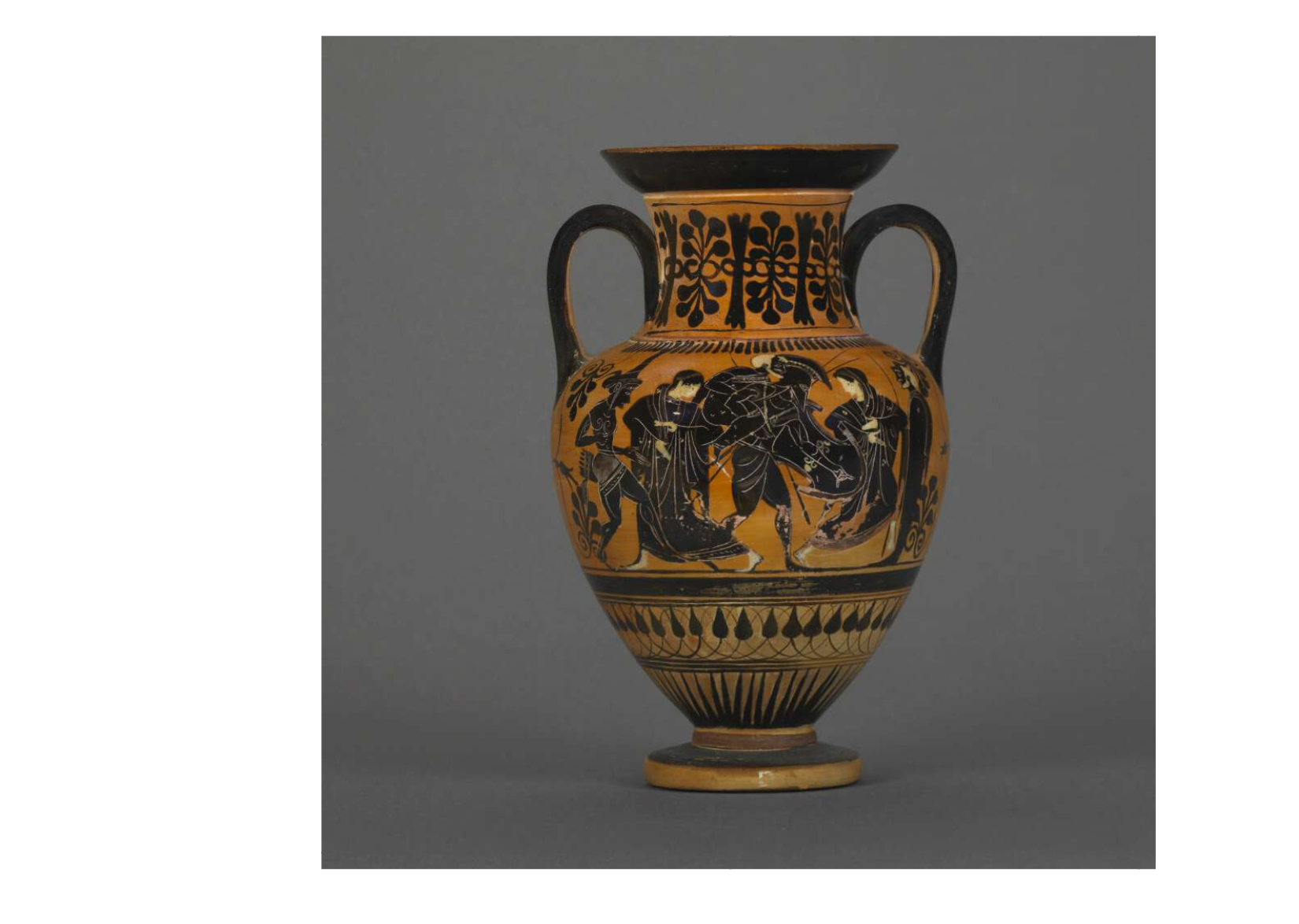
Artifact's Relationship to Themes
This artifact represents the story of Aeneas carrying his father, Anchises, away from the fall of Troy. Our team decided to include this object in our exhibit because this story is often used to depict the flee from one’s home through Anchises. Anchises is portrayed as holding the household gods while being carried by Aeneas. These household statutes are not particularly useful in a battle but we wanted to highlight the symbol of hope that they serve. Specifically, the jewelry box, diary, and birthday card do not serve an explicit usefulness when fleeing one’s home however they are signs of the humanity preserved in the tragedy of the refugee experience.
Neck Amphora
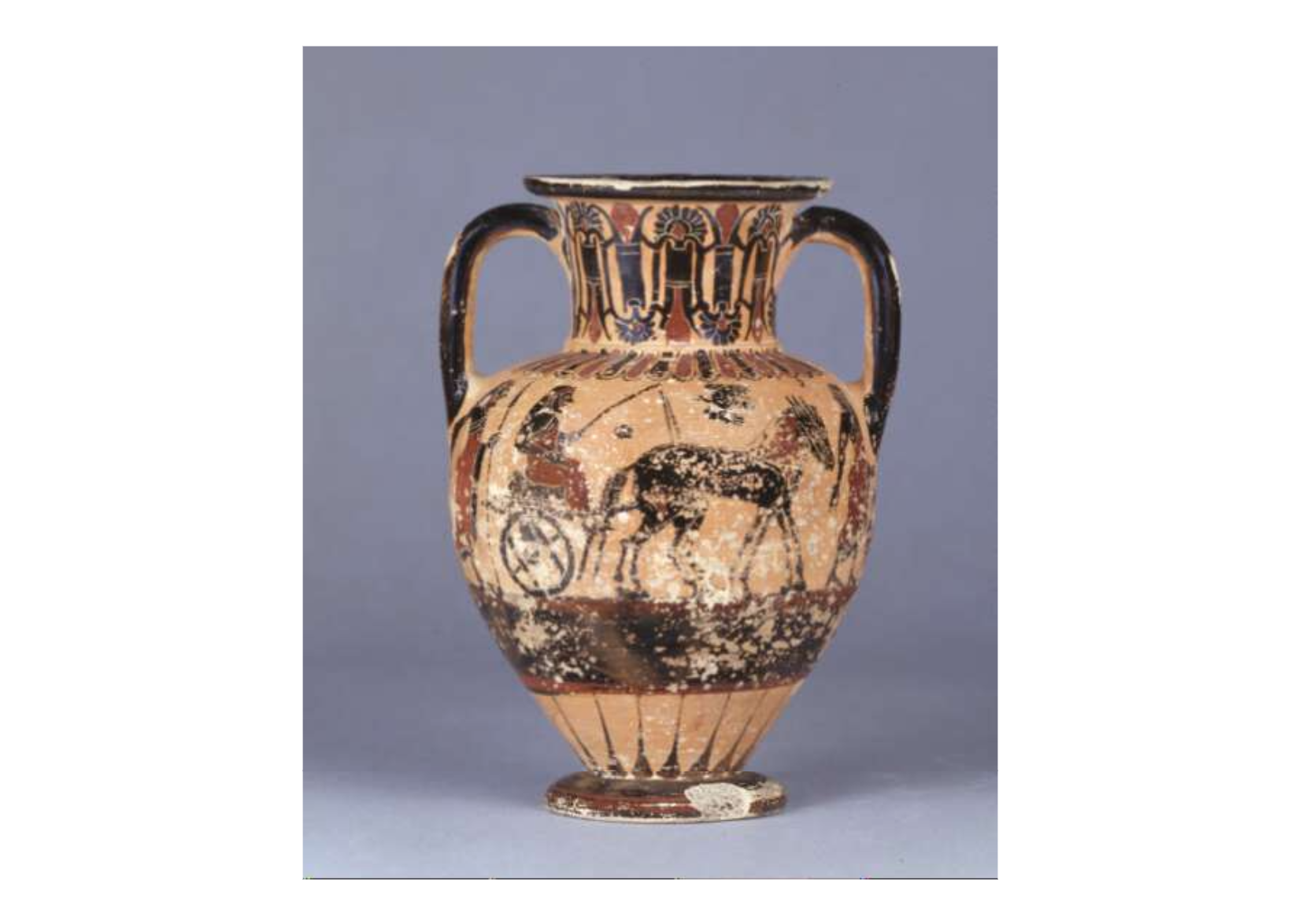
Artifact's Relationship to Themes
The neck amphora shows the story of Oedipus and Laius on their separate journeys. In the story, they are father and son and meet each other and are unaware of who the other person is and Oedipus ends up killing Laius. Our team decided to include this artifact because it highlights the uncertainty that these journeys had. We wanted to include this object in the exhibition because it highlights a pivotal moment for both characters but they are unaware of the gravity that it holds for their story.
Closing Remarks
The curation of artifacts can be categorized as objects that were non-useful in aiding in the physical survival of refugees. Objects that were gifted between refugees, such as the backpack, the jewelry box, and the birthday card, demonstrate these refugee’s appreciation for one another, the importance of preserving personal identity and cultural heritage, and the strive to maintain normalcy and the family structure. The diary and the wooden chest of refugee mementos emphasize the individual thoughts and feelings of these refugees, and their documentation is a testament that their experiences are important and there is hope that there is a future for them to share this. The black bronze pot and both amphoras represent perseverance in the unknown and valuing objects even if they are not useful because they are sentimental.
Although “home” is often viewed as a physical location, it is essentially the space in which you can be at peace. As we analyzed the way the collection of artifacts is memory-keeping in that these refugees interacted with them in a way that demonstrated they had previous lives and the hope of reconnection with this aspect of themselves in the future, we ultimately proved that these objects were used to create a sense of “home.” Fighting against the dehumanization of refugees that often occurs when the documentation of their lives is reduced to just data, the collection serves as proof of their hope and humanity that lends to the constant creation of one’s personal “home.”
Further Exploration

Jewelry Box
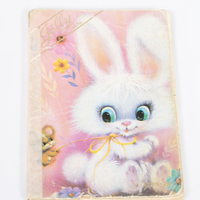
Diary of Refugee in Thai Prison
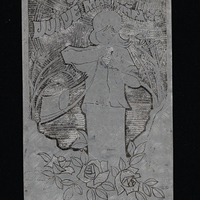
Aluminum Birthday Card
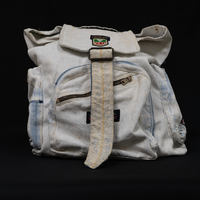
Jean Backpack
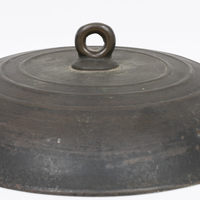
Black Bronze Pot
